Church of the Holy Trinity in Chmielnik
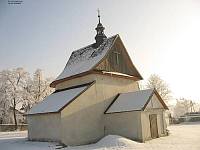
The first mentions about this oldest historic building in Chmielnik date back to 1354 when it was consecrated by Bodzanta, the bishop of Cracow. In 1558 the church was defiled by religious dissenters led by Jan Oleśnicki, the then heir of Chmielnik. The church and the presbytery were looted and as late as the 17th century new equipment, among other things a new altar, was purchased, but its walls were not renovated. In 1782, due to the walls' disastrous condition, it was decided to tear them down and leave the presbytery only. Five years later masses were celebrated in the newly built church of the Immaculate Conception of the Blessed Virgin Mary. The redecoration of the old church was carried out in the late 19th century.


fot. Archiwum UMiG Chmielnik autor Waldmera Kwiatkowski
Parish Church of the Immaculate Conception of the Blessed Virgin Mary in Chmielnik

The construction of the church was commenced in 1730 by the then owner of Chmielnik, Jerzy Marcin Ożarowski. The construction works were completed in 1783 and in the same year the church was consecrated by Bishop Wojciech Boxa Radoszewski. The building's façade is finished with a triangular peak in the form of an attic with the monogram of Jesus Christ. The church's interior is a single nave. The finishing and equipment comprise Baroque-style elements, the main altar dates back to 1886. It consists of two storeys, in the middle part, between the columns, there are figures of St. Peter and St. Paul placed next to the Immaculate Mary painting from 1736. Its interior is also adorned with six side altars and a late 19th-century organ.


fot. Archiwum UMiG Chmielnik autor Andrzej Pęczalski, Tomasz Biernacki
Parish Church in Sędziejowice
The Gothic St. James the Greater parish church. In 1875 the church was developed and in 1917 side altars were renovated. From the south, a porch with a 15th-century lancet portal leads to the church. The church has a rectangular Gothic-style nave. The presbytery is closed and multilateral. A tall tower with three bells, the oldest of which dates back to the 15th century, is located next to the main entrance to the church.
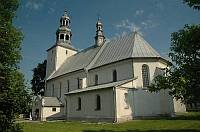

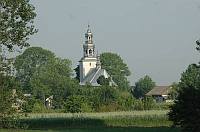
fot. Archiwum UMiG Chmielnik autor Andrzej Pęczalski
Synagogue in Chmielnik
The synagogue was constructed in the 1630s by the town owner, Krzysztof Gołuchowski. In its proximity there were public buildings of the Jewish community: the rabbi's house, the house of prayer and the like. The north façade was adjacent to the cemetery fenced with a stone wall. Unfortunately, the synagogue's initial décor has not been preserved until the present times. Most changes date from the redevelopments made after the 19th-century fires and World War II damage. The synagogue is made from stone and bricks on a rectangular plan. The building is covered with a hipped roof. The synagogue's interior consists of a square worship room, a bicameral vestibule on the ground floor and a female choir gallery above it. The preserved elements of the décor in the warship room are very decorative; besides the vault, there are fanciful capitals supporting the cornice and a round window with decorative garnishing in the east wall. The synagogue's equipment has not been preserved because it was removed by the Germans during World War II. In the post-war times, the building was used as a granary. In 2008 it was decided to rebuild the synagogue. It will host an education centre and museum commemorating the life in a typical Polish and Jewish little town, the so-called shtetl (derived from the Yiddish word meaning little town).
Now, visit http://swietokrzyskisztetl.pl/en/


fot. Archiwum UMiG Chmielnik autor Andrzej Pęczalski







Fot. POLSKA AKADEMIA NAUK WARSZAWA (c) PAN Warszawa, (c) UMiG w Chmielniku
The Market Square in Chmielnik
The architectural layout dates back to the 19th century when the town was rebuilt after the great fire of 1876. The town plan was determined at the junction of two significant routes: Kielce-Busko and Jędrzejów-Szydłowiec. The Market Square is surrounded with one- or two-storey buildings; most of them date back to the 19th century. They were constructed on the ruins of old tenements burned down in numerous fires. Some of them have arches with supports. These are burgher houses and tenements. The present appearance of the Market Square dates back to 2005 when it was thoroughly redecorated. An interesting element is the reconstruction of an old well - it is in use and has tasty drinking water. Moreover, on hot days the fountain in the shape of a pivoting globe poured with water gives refreshment. At night, the fountain is illuminated and is an attractive meeting place of the inhabitants of Chmielnik. On one of the buildings on the Market Square in Chmielnik, there is a board commemorating the visit of Józef Piłsudski, the first governor of reborn Poland after Word War I, in the town.

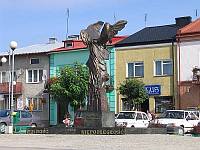
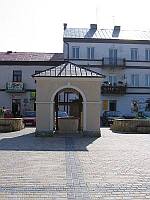

fot. Archiwum UMiG Chmielnik autor Andrzej Pęczalski


fot. Archiwum UMiG Chmielnik autor Andrzej Pęczalski
Sanctuary of the Madonna of Loreto in Piotrkowice
 The beginning of the sanctuary of the Madonna of Loreto is 15 August 1628, when a figure of the Madonna dated back to 1400 and famous for its grace was relocated from the St. Stanislaus parish church to the wooden chapel of the Annunciation to the Blessed Virgin Mary. In the chapel there is also a small figure of the Immaculate Mary discovered during agricultural works in the parish. The construction of the Annunciation to the Blessed Virgin Mary church was completed in 1652. The Saint Bernard's Order, who took care of this place for many years, had to leave it due to the dissolution of orders; it was replaced with the Redemptorist Order, but its fate turned out to be similar. Then, the sanctuary was entrusted to diocese priests. On 7 September 1958 the figure of the Madonna of Loreto was crowned under the so-called papal law by Bishop Czesław Karczmarek in association with Archbishop Eugeniusz Baziak of Cracow and seven other bishops in the presence of around one hundred thousand pilgrims. Since 1970 the sanctuary has been under care of the Order of Discalced Carmelites. The Carmelites kindly invite the pilgrims to visit the sanctuary of the Madonna of Loreto. Church fairs are held on the Annunciation to the Blessed Virgin Mary - 25 March, the Scapular Mother of God - 16 July, the Nativity of the Blessed Virgin Mary - 8 September, the Madonna of Loreto - 10 December and Saint Joseph - 19 March.
The beginning of the sanctuary of the Madonna of Loreto is 15 August 1628, when a figure of the Madonna dated back to 1400 and famous for its grace was relocated from the St. Stanislaus parish church to the wooden chapel of the Annunciation to the Blessed Virgin Mary. In the chapel there is also a small figure of the Immaculate Mary discovered during agricultural works in the parish. The construction of the Annunciation to the Blessed Virgin Mary church was completed in 1652. The Saint Bernard's Order, who took care of this place for many years, had to leave it due to the dissolution of orders; it was replaced with the Redemptorist Order, but its fate turned out to be similar. Then, the sanctuary was entrusted to diocese priests. On 7 September 1958 the figure of the Madonna of Loreto was crowned under the so-called papal law by Bishop Czesław Karczmarek in association with Archbishop Eugeniusz Baziak of Cracow and seven other bishops in the presence of around one hundred thousand pilgrims. Since 1970 the sanctuary has been under care of the Order of Discalced Carmelites. The Carmelites kindly invite the pilgrims to visit the sanctuary of the Madonna of Loreto. Church fairs are held on the Annunciation to the Blessed Virgin Mary - 25 March, the Scapular Mother of God - 16 July, the Nativity of the Blessed Virgin Mary - 8 September, the Madonna of Loreto - 10 December and Saint Joseph - 19 March.
http://www.dom-modlitwy.karmel.pl/parafia/sanktuarium.html
www.loreto.pl
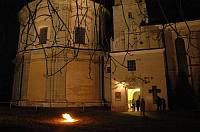

fot. Archiwum UMiG Chmielnik autor Andrzej Pęczalski, Tomasz Biernacki
The manor and park complex in Łagiewniki
The park is in quite good condition. The best preserved element is the park in Łagiewniki. It surrounds the complex of a former manor whose best preserved building is a 19th-century classical bricked one-storey granary covered with steel sheet. It has four wall columns on the front. In the west part, former farm buildings and a linden avenue are preserved. Among the linden trees, there is an old oak tree that is a natural monument. The rows of the linden trees, the age of which is estimated at around 300 years, and the chestnut trees indicate the former road.
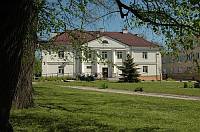

fot. Archiwum UMiG Chmielnik autor Andrzej Pęczalski
Tarnoskała Hill in Piotrkowice
The hill located to the south-east of Piotrkowice, on which the buildings of the former estate of the Tarnowski family are preserved. The palace complex dates back to the late 18th century; it comprises four pavilions, among which there was a huge courtyard with a well in the middle, a stable and a scenic park. There are preserved three classical pavilions which were adapted for public use. In the pavilions, one can see the remains of the stucco décor and fireplaces. At present, this complex hosts a kindergarten and a school named after Pope John Paul II.
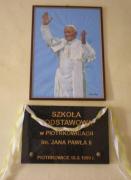

fot. Archiwum UMiG Chmielnik autor Tomasz Biernacki



fot. Archiwum UMiG Chmielnik autor Tomasz Biernacki


fot. Archiwum UMiG Chmielnik autor Andrzej Pęczalski

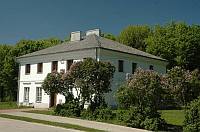
fot. Archiwum UMiG Chmielnik autor Andrzej Pęczalski


